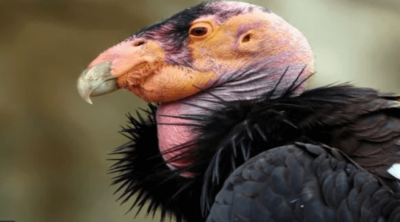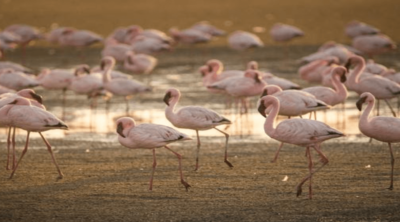
When it comes to hummingbirds, their claim to fame is their size, which is surprising, considering that their migration is quite interesting in itself. In this BirdEden article, we will see why, when, and where do these birds migrate.
Do hummingbirds piggyback geese?
Contrary to the popular belief, hummingbirds do not piggyback geese during migration, and that becomes evident from the fact that the two species use different flyways.
Have you noticed that hummingbirds, which swarm the bird feeders in your garden in fall, are gone for a part of the year in winter? Have you noticed that these birds become unusually active before they disappear for a part of the year? Even if you are not into bird watching, it’s highly unlikely that you will miss the chaos these birds cause before they embark on their journey down south.
Hummingbird Migration
Of the 300+ hummingbird species found in the world, only a few species resort to seasonal migration. These include the ruby-throated hummingbird (Archilochus colubris), black-chinned hummingbird (Archilochus alexandri), rufous hummingbird (Selasphorus rufus), etc. In fact, the rufous hummingbird, which travels over a distance of 2,000 miles between its breeding site in Alaska and wintering site in Mexico, boasts of the longest migration of any hummingbird species and the longest migration of any bird relative to its size.
Where do Hummingbirds Migrate?
Hummingbirds migrate between their breeding grounds in the north and wintering grounds in the south. In other words, they migrate from temperate areas to the tropics. Their breeding grounds in north are located in southern Canada and almost entire United States, i.e., Texas, Arizona, Idaho, Montana, Nevada, Utah, New Mexico, Arizona, Washington, British Columbia, and some species―such as the rufous hummingbird―are even found in Alaska. On the other hand, their wintering grounds are primarily located in Mexico and Central America.





Depending on which flyway they take, some species of hummingbirds have to cross the Gulf of Mexico, Mojave desert, or the Rockies in course of their migratory journey. Some ruby-throated hummingbirds, for instance, fly non-stop over the Gulf of Mexico to reach their wintering grounds in southern Mexico and Central America. After studying hummingbird migration patterns, ornithologists have come to the conclusion that these birds are most likely to choose the pathway where the availability of food is assured.
Hummingbirds are New World species, which means they are exclusively found in North and South America. For South American species, migration works the other way round, as they move north to the tropical areas during southern winter.
When Does Hummingbird Migration Start?
Their southward journey begins somewhere between August and September, though some species are known to set out in July itself. These birds feed more actively in the weeks before migrating and add 25 – 40 percent to their body weight to survive the long journey ahead. This is why they swarm the bird feeders in your garden just before they disappear for some time during winter. The return leg of the journey begins somewhere in January or February.
It’s difficult to say as to why exactly these birds migrate or how they realize that it’s the time to migrate. Some ornithologists are of the opinion that hummingbirds take a cue from daylight, while some say they migrate in response to the decline in insect and flower population. Additionally, some of these ornithologists suggest that a chemical change in their body prompts them to migrate. Interestingly, they migrate at the same time of the year and even take the same path to go to the same place year after year.
More Interesting Facts About Hummingbird Migration
Unlike geese and swans, hummingbirds do not migrate in flocks. Instead, they set out on the journey alone. Ornithologists believe that their solo journey helps them ensure they don’t attract predators. Additionally, their tendency to fly solo also ensures that they don’t put too much pressure on resources of the area where they halt to refill. This is very important, as these birds have to feed at regular intervals to maintain their body weight.
They fly during the day and that too, at a low height, which makes it easier for them to spot flowers to refill themselves, and sleep at night. With no place to sleep, birds flying over the Gulf of Mexico either fly continuously or take rest on ships and oil rigs. Yet another interesting fact about migratory hummingbirds, is that males set out on their migratory journey first, while females follow after a few weeks. Ornithologists believe that this is a deliberate move to give males enough time to establish their territory.
That the diet of hummingbirds primarily comprises insects, might come as a surprise for some people, considering that the picture of hummingbirds feeding on nectar from flowers has been etched on our mind. Basically, nectar is their source of energy which helps them go after insects―their source of protein.
In the United States, many people remove hummingbird feeders somewhere in September or October, as they believe that the easily available food will keep these birds back during the winter and thus, make them vulnerable to freezing. The fact though, is that no matter how much food is available for them, hummingbirds will leave when they have to leave. If you are seeing these birds in your area in October, they are most likely the birds that are migrating through your area. By keeping your feeders intact, you are likely to attract these migrants as well as non-migrating hummingbirds to spend some time in your backyard.


